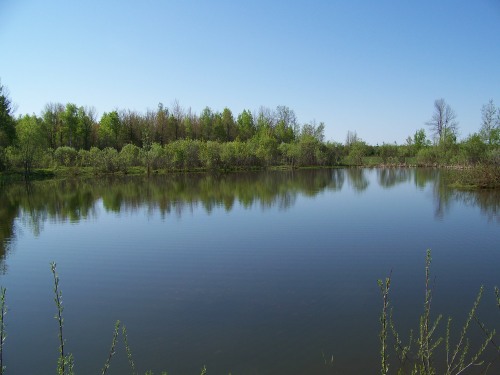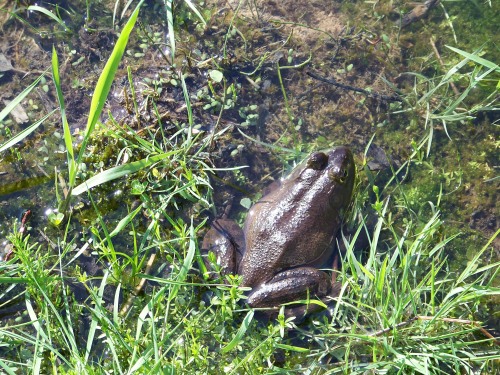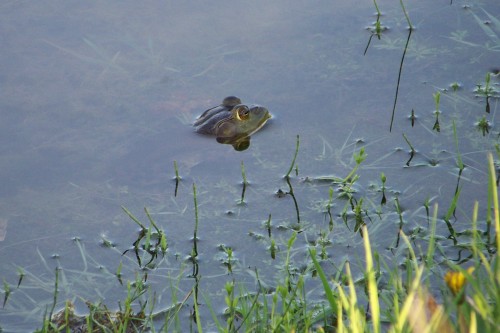
Although the man-made pond is growing increasingly naturalized each year, with assorted willow shrubs and small trees growing up on the south bank, you can still walk all the way around its perimeter. Just a few weeks ago, this was a quiet walk, but as the weather has warmed up, that has changed. As you stroll along the shore, 10 or 15 feet ahead of you squawks of alarm, followed by a splash, precede your approach. It seems the pond is excellent habitat for Bullfrogs (Rana catesbeiana). Their distinctive “yelp” is quite startling when you’re not expecting it. You can listen to the yelp-splash at CaliforniaHerps.com.

Bullfrogs are the largest North American frog species and adults may reach 10 to 20 cm (3.7 to 8 inches) in length. The individual above was close to the larger end of that scale. As females are generally larger than males, I assume it is a female, close to 8 inches long. Other signs to check for to differentiate males and females are the tympanum (eardrum), the round patch behind the eye, and the throat. In males, the tympanum is larger than the eye, while it is about the same size as the eye in females. Males have yellow throats while females have white.

Bullfrogs will eat almost any small animal that they can capture and swallow, including fish, snakes and young waterfowl, but most of their diet is made up of invertebrates such as dragonflies, beetles, spiders, snails and crayfish. They, in turn, are dinner for fish, turtles, herons, raccoons, otters and mink, and yes, people. Because of their large size, Bullfrogs are hunted for their legs. But not here at Willow House. Their legs are safe.
